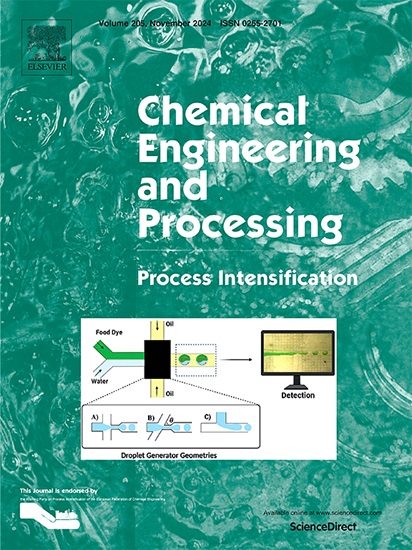The new choice for ultrasonic-assisted extraction of Laminaria japonica polysaccharides: a green and efficient deep eutectic solvent
IF 3.8
3区 工程技术
Q3 ENERGY & FUELS
Chemical Engineering and Processing - Process Intensification
Pub Date : 2025-06-16
DOI:10.1016/j.cep.2025.110405
引用次数: 0
Abstract
We established an environmentally friendly and efficient method to extract Laminaria japonica polysaccharides (LJPs) by utilizing ultrasound-assisted extraction in conjunction with deep eutectic solvents (DESs). Among the various DESs prepared, the composite DES of lactic acid and choline chloride exhibited the highest extraction rate of polysaccharides. Optimization of the extraction process was carried out using a single-factor experimental design. The highest polysaccharide yield was 33.72 %, and the ideal conditions were as follows: a liquid-solid ratio of 20 mL/g, a water content of 30 % (v/v), an extraction temperature of 60 °C, and a duration of 30 min, a molar ratio of 1:3. Subsequently, the response surface method was employed to further optimize the three main parameters. Moreover, the dosage was scaled up to verify the maturity and reliability of this process route, thus providing support for industrial production. Fourier transform infrared spectrometer (FT-IR) and scanning electron microscope (SEM) images confirmed the extracts had the features of polysaccharides. Concurrently, we evaluated the antioxidant activity of the LJPs, which demonstrated significant free radical scavenging capabilities. The greenness of this analytical method was evaluated by using the Green Analytical Procedure Index (ComplexGAPI), demonstrating that this method complies with the concept of sustainable development.

超声波辅助提取海带多糖的新选择:绿色高效的深度共晶溶剂
建立了一种高效、环保的超声辅助提取海带多糖(LJPs)的方法——深度共晶溶剂(DESs)。乳酸-氯化胆碱复合DES对多糖的提取率最高。采用单因素实验设计对提取工艺进行优化。多糖得率最高为33.72%,理想条件为液料比20 mL/g,水含量30% (v/v),提取温度60℃,提取时间30 min,摩尔比1:3。随后,采用响应面法对三个主要参数进行进一步优化。并对投加量进行了放大,验证了该工艺路线的成熟度和可靠性,为工业化生产提供了支持。傅里叶变换红外光谱仪(FT-IR)和扫描电镜(SEM)图像证实提取物具有多糖的特征。同时,我们评估了ljp的抗氧化活性,它显示出显著的自由基清除能力。采用绿色分析程序指数(ComplexGAPI)对该分析方法的绿色度进行了评价,表明该方法符合可持续发展的理念。
本文章由计算机程序翻译,如有差异,请以英文原文为准。
求助全文
约1分钟内获得全文
求助全文
来源期刊
CiteScore
7.80
自引率
9.30%
发文量
408
审稿时长
49 days
期刊介绍:
Chemical Engineering and Processing: Process Intensification is intended for practicing researchers in industry and academia, working in the field of Process Engineering and related to the subject of Process Intensification.Articles published in the Journal demonstrate how novel discoveries, developments and theories in the field of Process Engineering and in particular Process Intensification may be used for analysis and design of innovative equipment and processing methods with substantially improved sustainability, efficiency and environmental performance.

 求助内容:
求助内容: 应助结果提醒方式:
应助结果提醒方式:


